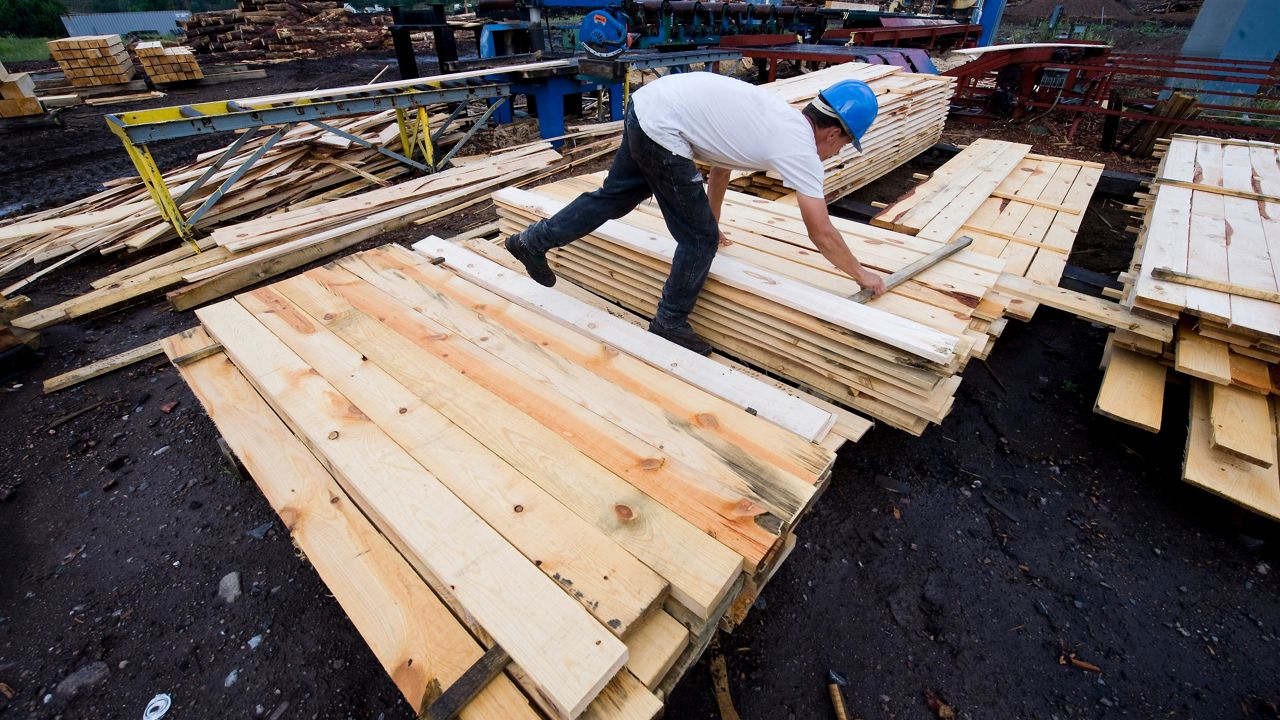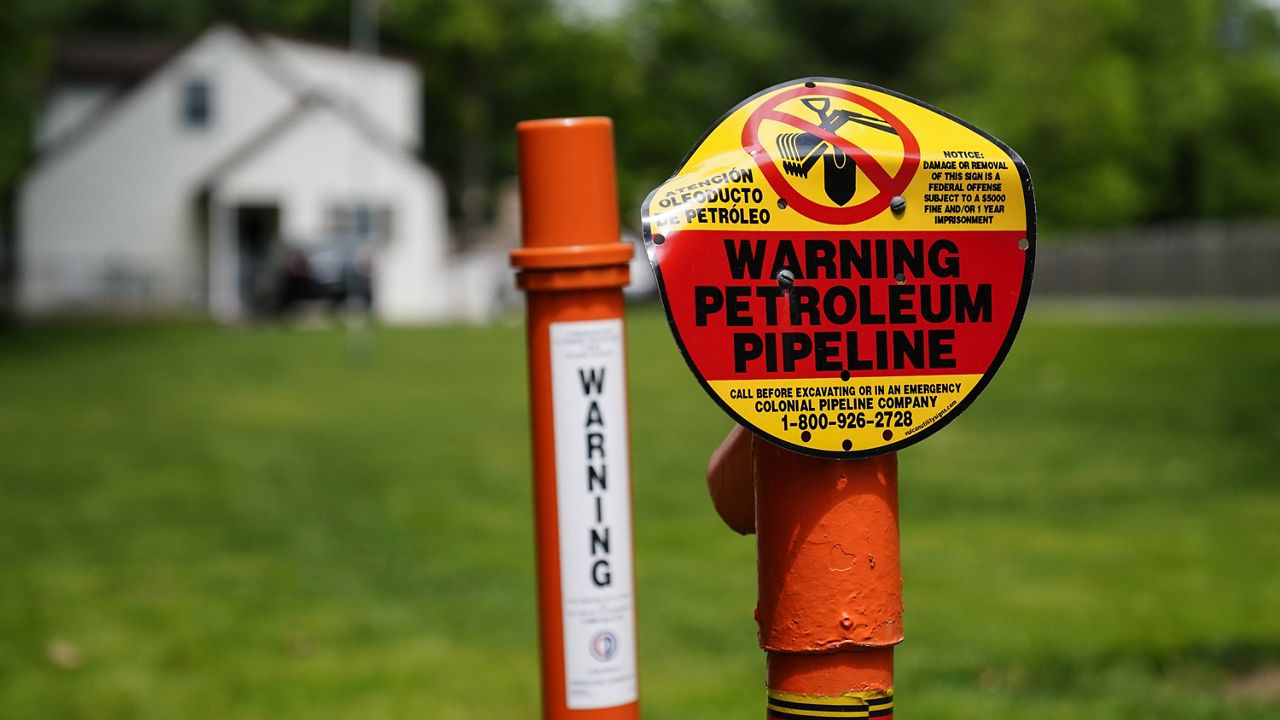LEXINGTON, Ky. — Multiple factors continue to contribute to a nationwide shortage of lumber, increasing costs and putting construction projects on hold.
What You Need To Know
- Lumber supply dwindles as construction booms
- Contracts being written to allow for price increase
- Local businessman says it's, "As bad as it's ever been."
- Scarcity of wood has caused average home price to increase by nearly $40,000
The lumber supply was lower than usual before the COVID-19 pandemic began and closed mills slowed the import process, according to the National Association of Home Builders (NAHB). The NAHB also reported contributing factors include the current lack of certified semi-truck drivers to haul lumber and, at the same time, people spending time during pandemic-related lockdowns to build decks, repair fences and start other do-it-yourself projects that require construction staples, such as plywood and two-by-fours.
Problems caused by the ongoing lumber shortage have made their way to Congress as part of the NAHB's grassroots effort urging the Biden administration to address the growing problem of rising lumber and material prices along with supply shortages.
Responding to a request by Rep. Robert Aderholt, R-Ala., to make rising lumber prices and production issues a priority during a May 6 House Appropriations subcommittee hearing on President Joe Biden’s 2022 budget request, Commerce Secretary Gina Raimondo responded, “I promise you I will.”
During the hearing, Rep. Ben Cline, R-Va., noted lumber prices have been volatile due to the COVID-19 pandemic and cited NAHB data on how it has affected home prices.
“Over the last year, lumber prices have been skyrocketing with oriented strand board jumping over 250% since March of 2020,” Cline said. “A sheet of OSB was around $8 in March of 2020 while today it is over $60 a sheet and climbing.
The NAHB said in a press release the overall lumber prices have tripled and translate to a nearly $36,000 increase in the price of the average single-family home.
Cline asked Raimondo if she could discuss what resources may be available, or have been dedicated by the Commerce Department to look into the causes of skyrocketing lumber prices, what impact this is having on the economy, and whether the secretary could commit to working with industry stakeholders and with Congress to identify the challenges and potential solutions to the crisis.
“I agree with you that the home building industry and the housing sector are a vital portion of our economy, and they are struggling as you say,” Raimondo said. “A lot of supply chains have been disrupted during the pandemic. It isn’t just lumber. Recently the ITA [International Trade Administration] has been doing a good deal of convening stakeholders to learn exactly why this is happening. And what I can commit to you is to follow up with you to work collaboratively with you. I actually would love your guidance on what you think could be done. So, right now, we are trying to get under the covers of what’s going on, what are the root causes, and then what can we do at ITA to try to solve the problem because I understand the problem, and it affects the whole industry.”
Nick Keitz, owner of Keitz Construction and president of the Building Industry Association of Central Kentucky (BIA), does mainly remodeling projects. In a Spectrum News 1 Kentucky story this past September, he said he anticipated the lumber market to begin getting back to normal by this past January. Instead, it has gotten much worse. Keitz added material for a 200-square-foot deck currently costs around $3,600, more than four times the price just two years ago.
“When it didn't fall off in January and February, everybody knew that it was going to be full-on from here on out,” he said. “The demand is at an all-time high, and the suppliers, the lumber yards, have not returned to 100% operations, like they were before the pandemic, because they realize they can keep about 50% of their staff and make the same amount of money because of the supply-and-demand.”
It’s not just lumber prices on the rise. Per NAHB, other building materials have been “steadily rising since 2020” and are “in short supply.”
“There’s the lumber side of it, and then everything else is done the same,” Keitz said. “The price of glass for shower doors and the track material, which comes from different vendors, are up as well. The price of glass is up 10% on shower doors from the start of the year. You name the material, and it’s gone up. Then, there’s also a trucker shortage, so freight on everything has gone up. I think a lot of places are having trouble finding people that want to work because they keep getting stimulus money, so they keep getting paid to sit around the house.”
With the lumber shortage driving up the average home price by around $36,000, Keitz said the BIA had taken steps to allow for needed cost adjustments in building contracts. He said members of the BIA of Central Kentucky began encountering such problems about six months ago.
“Some builders came to us as the BIA asking for help with contract revisions and language that keeps them from having to eat those costs,” Keitz said. With the way things are right now, it’s not just the difference of a few dollars; it’s thousands of dollars. I do all remodels, so I felt it, but I haven't felt it like those guys.”
Keitz said two things could happen for the lumber market to return to normalcy.
“Either everybody will finally go back to work as they did before the pandemic and the market will slowly moderate, or it's going to cause such a bust it's just going to slow the industry down, which will then bring the prices down. The latter is probably the side I'm leaning toward, honestly.”
Keitz said he could probably take on maybe two more jobs this year.
“My schedule is almost 100% full,” he said. “It’s unbelievable. I've never been full in 13 years.”“My schedule is almost 100% full,” he said. “It’s unbelievable. I've never been full in 13 years.”
Steven Hatton, a distributor with 84 Lumber, told WoodTV.com the company usually honors a quote for 30 days, but he can’t honor a quote for that amount of time right now because of the volatile prices.
“We’ll have people call on Monday and ask for a quote on a list, and we’ll tell them, ‘Hey, you’ve got seven days, and it’s going to go up,’” he said.
This month, random-length lumber futures hit a record high of $1,615, a sevenfold gain from the low in early April 2020. The price of 1,000 board feet of lumber has generally traded in the $200-to-$400 range for the past several years. It’s now well above $1,000. One board foot is 12x12x1 inches, and the average new single-family home takes about 16,000 board feet of lumber to construct. A new house that would have cost $10,000 in wood to get off the ground a couple of years ago now costs $40,000.
Some industry executives expect lumber production to catch up with demand eventually. Samuel Burman, an assistant commodities economist, predicted in a recent note to clients that there will be a "sharp fall" in lumber prices over the next 18 months.
A recent NAHB Housing Trends Report revealed 16% of adults are planning a home purchase in the next 12 months. Among those prospective buyers, 42% are looking to buy a newly built home, and 30% an existing home. A year earlier, in the first quarter of 2020, only 24% of buyers reported a preference for new homes, while 40% were looking for an existing home.
These changes provide evidence that a growing number of buyers are looking specifically at new home construction from the onset of their home search, according to the survey.
Those who work with wood outside of the construction business are experiencing some effects of the lumber shortage, but not on the same scale as builders or remodelers. William Ney, who owns Ney's Custom Tables in Lexington, said the price of hardwood purchased from more boutique local mills has not fluctuated much, but it is much more expensive if not bought domestically.
"The cost of contruction lumber and sheet goods have risen dramatically, in some cases 80%," he said. "It certainly is not a good scene for anyone who needs wood as part of what they do."






)


